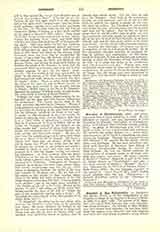

Benedict of Peterborough, abbot and writer, place and date of birth unknown; d. 1193. He was educated at Oxford, and was appointed in 1174 chancellor to Richard, Archbishop of Canterbury, and in 1175 became Prior of Christ Church, Canterbury. As Abbot of Peterborough from 1177 to his death in 1193, he was a learned and able executive. He restored the abbey finances to a sound basis, and was active till his death in completing and beautifying the buildings. Through his personal favor with Richard I he secured for his abbey various rights and privileges. He has been sometimes confused with Benedict of Sansetun, later Bishop of Rochester, vice-chancellor during the absence of King Richard. He had the library enriched by transcriptions of standard works in theology, exegesis, law, science, and poetry. He wrote a history of Becket’s “Passion”, preserved in part in the work on Becket known as “Quadrilogus”, and also, a first-hand account of Becket’s “Miracles” (Robertson, “Materials for the History of Thomas Becket”, Rolls Series, 1876). He was formerly regarded as the author of “Gesta Henrici II”, which Stubbs would identify with the lost “Tricolumnis” of Richard Fitz-Neal, author of the “Dialogus de Scaccario”.
J. V. CROWNE

